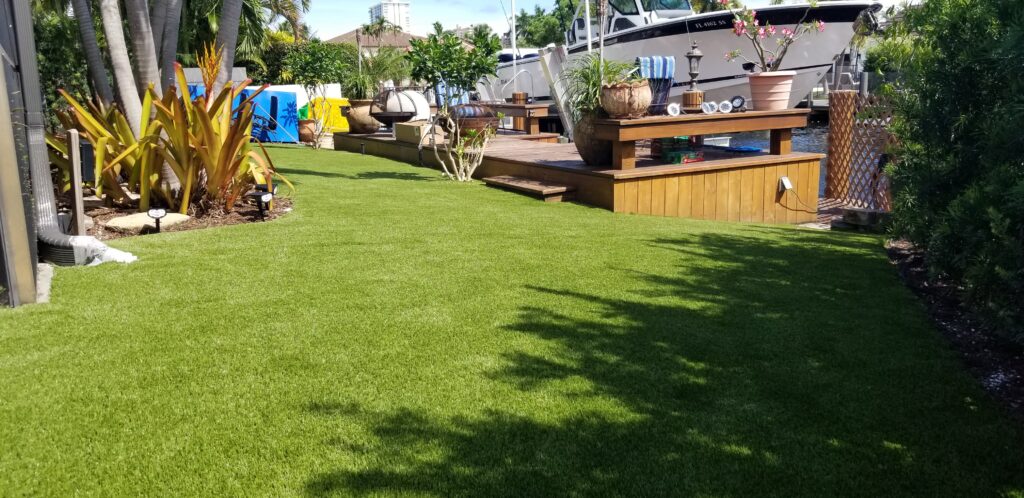Synthetic grass, also known as artificial turf, has gained widespread popularity as an ideal surfacing solution for sports fields across various disciplines. Here’s why synthetic grass is a compelling choice for sports field installations:
- Durability and Resilience: Synthetic grass is engineered to withstand heavy foot traffic, intense gameplay, and adverse weather conditions without succumbing to wear and tear. Its durable construction ensures consistent performance and longevity, making it an ideal choice for high-impact sports fields that experience frequent use.
- Consistent Playing Surface: Unlike natural grass, which can become uneven and patchy over time, synthetic grass offers a uniform playing surface that remains consistent throughout the season. This predictability is crucial for athletes, as it minimizes the risk of injuries caused by uneven terrain or divots, allowing for smoother gameplay and enhanced performance.
- All-Weather Accessibility: Synthetic grass sports fields are not susceptible to the same weather-related challenges as natural grass fields. Whether rain or shine, synthetic turf remains playable, providing athletes with uninterrupted access to training and competition facilities year-round. Additionally, synthetic grass features built-in drainage systems that efficiently channel water away from the surface, preventing waterlogging and ensuring rapid field recovery after rain showers.
- Low Maintenance Requirements: Maintaining natural grass sports fields can be labor-intensive and costly, requiring regular mowing, watering, fertilizing, and pest control. In contrast, synthetic grass fields have minimal maintenance requirements, reducing the need for ongoing upkeep and associated expenses. With occasional brushing and grooming to redistribute infill materials and remove debris, synthetic grass fields remain in optimal condition with minimal effort.
- Enhanced Playability and Performance: Synthetic grass offers superior traction, shock absorption, and ball response compared to natural grass, enhancing playability and performance across various sports. Athletes benefit from consistent surface characteristics, including optimal ball bounce and foot traction, which contribute to better control, agility, and overall gameplay experience.
- Customizable Features: Synthetic grass sports fields can be tailored to meet specific performance and aesthetic requirements, with options for different pile heights, infill materials, and surface textures. These customizable features allow sports facility managers to optimize field conditions for different sports, ensuring optimal performance and safety for athletes while maintaining visual appeal.
- Long-Term Cost Savings: While the upfront cost of installing synthetic grass may be higher than natural grass, the long-term cost savings are significant. Synthetic grass fields require less water, maintenance, and replacement compared to natural grass fields, resulting in lower operating costs over their lifespan. Additionally, synthetic grass fields offer a higher return on investment due to increased playing hours, reduced downtime, and extended longevity.
In summary, synthetic grass is a compelling choice for sports field installations due to its durability, consistency, all-weather accessibility, low maintenance requirements, enhanced playability, and long-term cost savings. By providing athletes with a safe, reliable, and high-performance playing surface, synthetic grass sports fields contribute to the success and enjoyment of sporting activities for players and spectators alike.
TK Turf
601 N Ashley Dr Suite #1100, Tampa, FL. 33602
(813) 534-4220
https://turfgrasstampabay.com/


Recent Comments